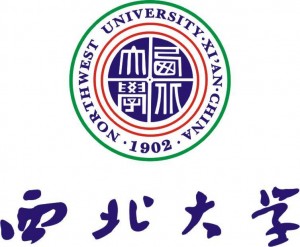The labour force is defined as the number of people of working age, who are either employed or actively looking for work. The participation rate is the number of people in the labour force divided by the size of the adult civilian noninstitutional population (or by the population of working age that is not institutionalized). The non-labour force
includes those who are not looking for work, those who are
institutionalised such as in prisons or psychiatric wards, stay-at home
spouses, children, and those serving in the military. The unemployment level is defined as the labour force minus the number of people currently employed. The unemployment rate is defined as the level of unemployment divided by the labour force. The employment rate
is defined as the number of people currently employed divided by the
adult population (or by the population of working age). In these statistics, self-employed people are counted as employed.
Variables like employment level, unemployment level, labour force, and unfilled vacancies are called stock variables because they measure a quantity at a point in time. They can be contrasted with flow variables
which measure a quantity over a duration of time. Changes in the labour
force are due to flow variables such as natural population growth, net
immigration, new entrants, and retirements from the labour force.
Changes in unemployment depend on inflows made up of non-employed people
starting to look for jobs and of employed people who lose their jobs
and look for new ones, and outflows of people who find new employment
and of people who stop looking for employment. When looking at the
overall macroeconomy, several types of unemployment have been
identified, including:
Frictional unemployment – This reflects the fact that it
takes time for people to find and settle into new jobs. Technological
advancement often reduces frictional unemployment; for example, internet
search engines have reduced the cost and time associated with locating
employment.
Structural unemployment – This reflects a mismatch between
the skills and other attributes of the labour force and those demanded
by employers. Rapid industry changes of a technical and/or economic
nature will usually increase levels of structural unemployment; for
example, widespread implementation of new machinery or software will
require future employees to be trained in this area before seeking
employment. The process of globalization has contributed to structural changes in labour markets.
Natural rate of unemployment – This is the summation of
frictional and structural unemployment, that excludes cyclical
contributions of unemployment (e.g. recessions). It is the lowest rate
of unemployment that a stable economy can expect to achieve, given that
some frictional and structural unemployment is inevitable. Economists do
not agree on the level of the natural rate, with estimates ranging from
1% to 5%, or on its meaning – some associate it with "non-accelerating inflation". The estimated rate varies from country to country and from time to time.
Demand deficient unemployment (also known as cyclical unemployment) – In Keynesian economics,
any level of unemployment beyond the natural rate is probably due to
insufficient goods demand in the overall economy. During a recession, aggregate expenditure
is deficient causing the underutilisation of inputs (including labour).
Aggregate expenditure (AE) can be increased, according to Keynes, by
increasing consumption spending (C), increasing investment spending (I),
increasing government spending (G), or increasing the net of exports
minus imports (X−M), since AE = C + I + G + (X−M)
Well-conducted, and with good health status.
1. Application Form
Please upload your finished application form here.
2. Health certificate
Photocopy of notarized foreigner physical examination record (for durations of study over 6 months)
3. Photocopy of valid passport
With name, passport number & expiration date, and photo included
4. Passport photo
A recent passport-sized photo of the applicant
5. Undergraduate school transcript
6. Bachelor's degree diploma
Graduation
certificate in languages other than Chinese or English should be
translated into Chinese or English and be certified by notarization.
7. Two letters of recommendation
From professor or associate professor or equivalents
Answer: ACASC charges a service fee of 50$ for using its online application portal. Applying through ACASC into Chinese universities attracts a service fee of $50.
Answer: Yes. ACASC gives the applicants, the chance to directly apply to their desired universities through our online application portal. We have synchronized our system to create a simple platform that connects universities and colleges in China to international students all around the world.
Answer: To track the application status, please log in your ACASC personal account. Whenever there’s an update, you will be informed on your application status through ACASC system within a day as soon as we receive university’s notification. You will simultaneously receive ACASC auto-email about the application status. To directly inquire about your application status, feel free to send us an email to admission@acasc.cn and our team will keep you updated.
Answer: When an application is pending a decision it means that your school has received it and no admissions decision has been made yet. The admissions office may have reviewed your application package or may not have.
The main cause of a pending application is usually incomplete application documents. As a result you will be requested by the school’s admission office to re-check and modify all submitted application documents or perhaps even add extra documents and then re-submit them.
To avoid further delays, carefully read the university’s comments, modify your application form on ACASC, and re-upload the required application documents. You can contact ACASC on admission@acasc.cn for any help with regards to your pending application
Processing time varies for different applications. For example to process a degree program application requires more time than a Chinese language application. Confirmation for Chinese language application by the admission office usually takes 2 to 4 weeks. However, time for degree programs application differs. For example fall semester application processing is after March, and it takes a period of 1 to 2 months. This also depends on your qualification and the number of applicants.















